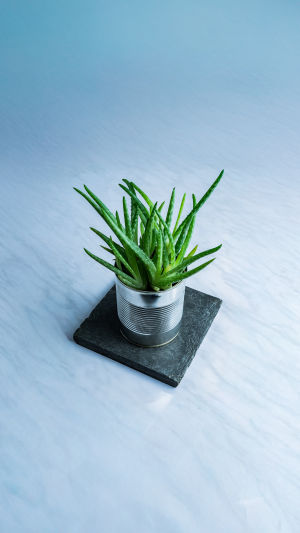Did you know that the air inside our homes can sometimes be two to five times more polluted than the air outside? In some extreme cases, it can even be 100 times worse.
Since we spend about 87% of our time indoors, finding ways to improve indoor air quality is essential for our health.
While air purifiers are a common choice, many studies show that some everyday indoor plants can work just as well, sometimes even better, in cleaning the air naturally.
<h3>Snake Plant – The Night Worker</h3>
Let's start with one of the stars: the snake plant. What makes it unique is its ability to work around the clock. Unlike most plants, it continues to absorb carbon dioxide and release oxygen at night, making it perfect for bedrooms. Studies reveal that in just 24 hours, the snake plant can absorb up to 70% of benzene and 50% of formaldehyde. That means we can sleep with fresher air and wake up feeling more refreshed.
<h3>Spider Plant – The Little Filter</h3>
Next up is the spider plant. Don't underestimate its size—this small plant is a powerful cleaner. Research shows that per square centimeter of leaf surface, the spider plant can absorb about 2.27 micrograms of formaldehyde in six hours. Over time, that adds up to a significant improvement in air quality. It's easy to care for and looks charming when hung near windows or placed on a desk.
<h3>Aloe Vera – The Gentle Healer</h3>
We usually think of aloe vera as a skin soother, but it also works wonders for indoor air. In a controlled test, aloe vera removed up to 90% of formaldehyde inside a sealed box within 24 hours. This makes it a great choice for living rooms or offices. Plus, it doubles as a natural remedy for burns or dry skin—so it's both useful and beautiful.
<h3>Other Stars You Should Know</h3>
Several other plants deserve a place in our homes:
<b>- English Ivy:</b> Can remove about 90% of benzene.
<b>- Golden Pothos:</b> A master at filtering formaldehyde.
<b>- Gerbera Daisy:</b> Especially good at absorbing trichloroethylene.
<b>- Boston Fern:</b> Effective against formaldehyde, benzene, and trichloroethylene.
<b>- Variegated Snake Plant:</b> Perfect for bathrooms since it thrives in low light and damp places.
<b>- Peace Lily:</b> Works well in shaded spots and filters multiple harmful chemicals.
With these plants, each room in our home can have its own natural "air helper."
<h3>Why Plants Work So Well</h3>
The secret lies in their leaves. Many indoor plants have a waxy coating that contains compounds like alcohols, aldehydes, ketones, and esters. These compounds help trap harmful chemicals in the air. For example, spider plants can metabolize formaldehyde into organic acids, sugars, and amino acids.
With pollutants like benzene and toluene, plants absorb them and break them down into harmless byproducts, sometimes even releasing them back into the air as carbon dioxide.
<h3>Limitations We Should Know</h3>
Of course, we need to be realistic. While plants are great helpers, they don't work as quickly as air purifiers. Their efficiency depends on plant size, leaf shape, and overall health. Also, air-cleaning effects build up over time rather than showing instant results. That's why relying only on plants is not enough. To keep our indoor air fresh, we should combine plants with other steps like opening windows for ventilation and reducing pollution sources.
<h3>Practical Plant Placement</h3>
Here's a tip: place the right plant in the right spot. In bedrooms, snake plants are ideal. In bathrooms, variegated snake plants thrive. For living rooms, ivy or pothos look stunning while cleaning the air. Not only do they freshen up the atmosphere, but they also act as natural décor, bringing a calming touch of green into our daily lives.
<h3>Fresh Start at Home</h3>
To sum up, while indoor plants may not fully replace professional purifiers, they remain one of the most natural, affordable, and beautiful ways to enhance air quality. They don't just clean the air—they also make our spaces more vibrant and cozy.
Lykkers, why not start small? Add a snake plant by your bed, hang a spider plant in your kitchen, or place ivy in your living room. With a few of these "green air purifiers," we can breathe easier, live healthier, and enjoy the beauty of nature right inside our homes.
So, which plant will you welcome into your space first?
Unbelievable Air Purifier: These Bedroom Plants Release Oxygen!
Video by GreenlandGarden





